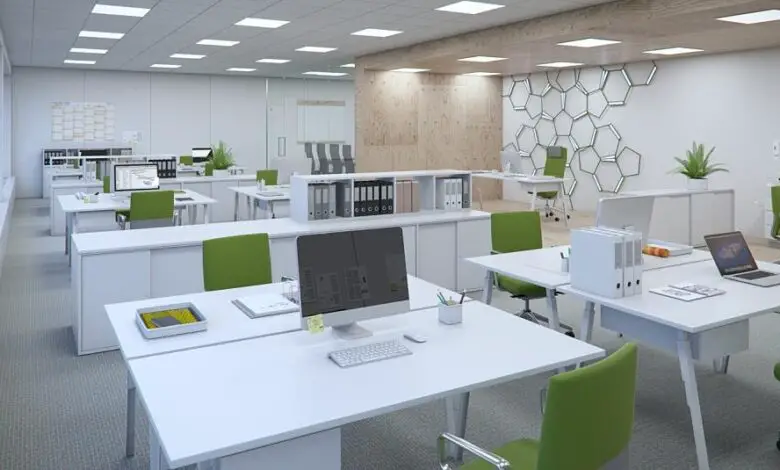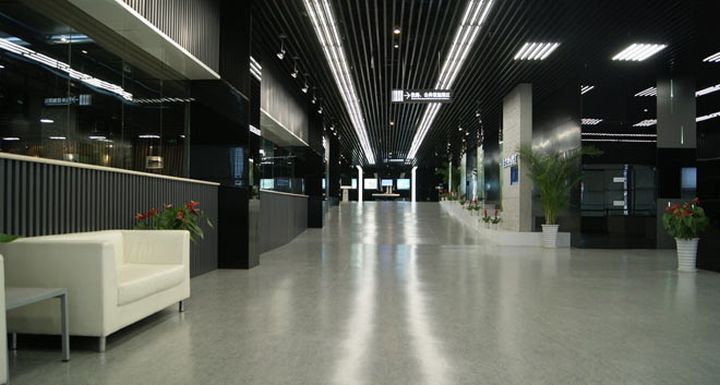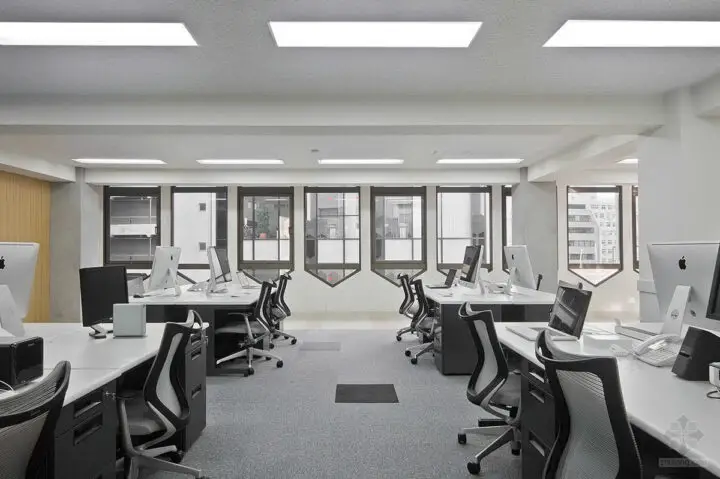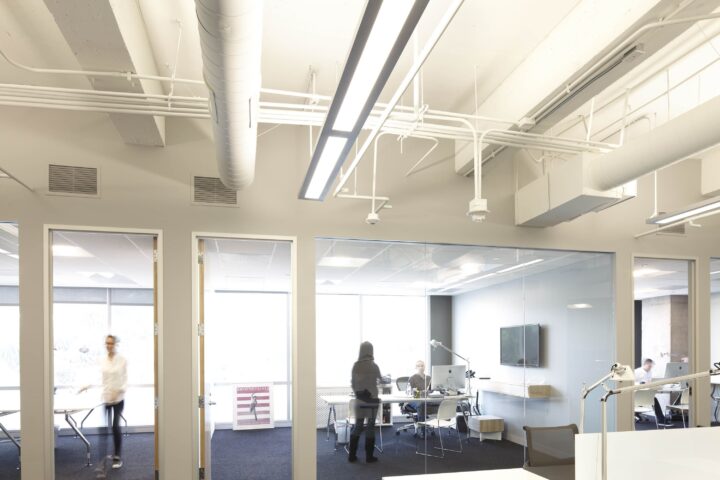
The lighting industry has revolutionized the way we view comfort even in task spaces. Offices are one of those spaces where a person spends at least one-fourth of their day. These spaces should yield comfort with productivity; therefore it is essential to have a soothing light layout which enhances efficiency of the task as well as providing ambience.
In most offices, modular grid ceilings are quite common and they allow only a certain kind of fixtures which are fit for the task such as troffer lights. Most older troffers supports T8 fluorescent tubes but they are very inefficient in offices where a good lighting setup is the first priority for at least 8-10 hours or round the clock.
LED light fixtures for offices
In task spaces liminal lighting is often marked enough for visibility only. But as the world has progressed it has grown quite subjective with respect to the use of office space. Not every office serves the same function and the core project decides the lighting setup.
Fluorescent fixtures are inefficient because they do not allow any variation with growing needs of the space. LED light fixtures on the other hand address many concerns alongside providing general lighting with ambiance. There are standard light fixtures available for offices which comply with modular ceilings.
LED tubes

LED tubes are a very effective replacement for older fluorescent fixtures. These tubes are also available in retrofit designs which are fit to replace T8 and T12 linear fluorescent fixtures. LED tubes are available in a range of sizes for different applications. The retrofit options are popular because they have certain specifications which work with older fixtures and are easy to install. LED tubes are available in three main listings:
UL Type A
UL Type B &
UL Type C.
The UL listing provides installation specifications such as ballast compatible, ballast replacement or LED driver operated fixtures.LED tube lights are smart and innovative they also have an internal driver which can power up to 40 tubes in a series which is quite a compatible scenario in office spaces. Choosing the appropriate LED tube comes with a little bit of background info which is mainly about compatibility of tubes. They provide directional lighting with reduced glare which is one of the main priorities in office lighting. To learn more about how to choose the right LED tube for your application check this link.
LED troffers
LED troffer fixtures are largely of use in modular grid ceilings common in offices. There are different types of troffer light fixtures available nowadays in different sizes and with different reflector types. Retrofit LED troffers are easy to upgrade and save up a lot of energy on overall consumption of energy.
LED troffer light fixtures have gained popularity in recent years for office spaces as they allow a lot of room for customisation such as correlated colour temperatures, CRI, reflector types etc. The usage of electricity is cut down by 40% and the ambience is improved due to glare-free lighting.
LED panels

LED panels are rectangular flat panels that are compatible with modular ceilings as well. These panels can easily recess into the ceiling and provide the highest level of illumination possible. LED panels are a newer technology and allow a whole array of possibilities in all commercial spaces and largely offices because of their design features.
LED panels feature three main plates; guide plate, reflector plate and diffuser plate which serve as the core of this fixture and the entire function heavily relies on these features. These panel fixtures are compatible in any setting and are available in different sizes, lumens and designs. The core components ensure ambient lighting which occupy little to no overhead space and allow a lot of customisation.
Advantages of using LED light fixtures in office spaces

1. Ambient and directional lighting
LED light fixtures provide directional lighting and have a very optimizable design which comply with different settings. The beam angle is adjustable and does not provide obstructive lighting which interrupts the office environment. Unlike fluorescent fixtures as they disperse the light in the surroundings which is wasted before it reaches the point of illumination. LED light fixtures have correlated colour temperature measurable on kelvin scale ranging from 2500K to 6000K which produces warm yellow to cool white/ daylight like light. This enables very specific lighting for any kind of office environment.
2. Energy efficient
LED technology is proven to be more energy efficient than most traditional fixtures. They operate on lower wattages and produce more lumens which end up illuminating more space than normal. This feature in turn reduces the total number of fixtures for a certain space. LED light fixtures can produce around 10000 or above lumens. They are 80% more efficient than traditional lamps and their other features such as dimmable option and low heat emitting technology help with reducing cooling costs as well.
3. Low maintenance
LED light fixtures are super low maintenance and they last longer than 8 years. Some heavy duty fixtures which have a durable design also last for around 11 years which is highly convenient as it reduces the costs of replacement after every year due to any accident or other issues. They have a good standby time and once after proper installation require only a little bit of maintenance. As with traditional lamps, the maintenance issues are quite frequent which also ends up with interruption in daily processes and ambience of a task oriented space.
Conclusion:

In conclusion, LED light fixtures elevate the ambience of task spaces by providing uniform lighting which is glare free and does not interact or interrupt the usual processes of the office space. These fixtures produce more lumens, have directional lighting and reduce the cost of electricity. With traditional lamps, flickering or low humming sounds are known to be quite distracting and migraine inducing. LEDs make use of green lighting technology which is also quite eco-friendly as it does not produce or interact with UV rays and reduces carbon footprint while being sustainable.
